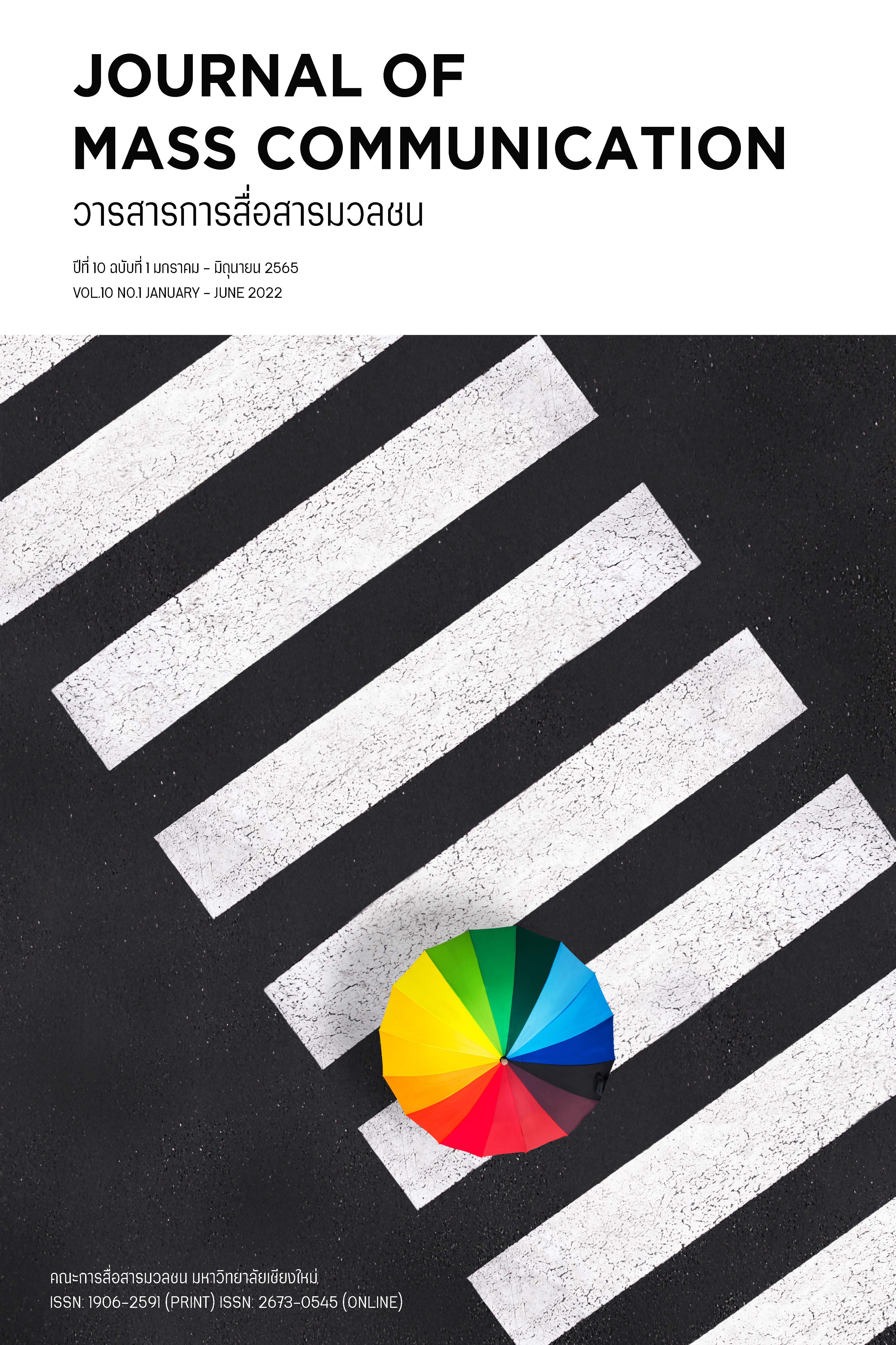Situations of Risks and Threats Affecting the Reputation of the Wellness Tourism Industry in Thailand
Main Article Content
Abstract
This research article aims to study the current situation of risks and threats affecting the reputation of the wellness health promotion tourism industry in Thailand. The results revealed that, according to the reputation framework, there were seven key risk factors and threats affecting the reputation of the wellness health tourism industry. The threats to governance risks appear the most at present. Also, the results of the study were product and service threats, innovation threats, citizenship threats, workplace threats, performance threats, and vision and leadership threats, respectively. It also found that communication risk factors and threats such as image communication and risk communication which has become a major threat that appears today and affects the reputation of the tourism industry for promoting the wellness of Thailand
Article Details

This work is licensed under a Creative Commons Attribution-NonCommercial-NoDerivatives 4.0 International License.
ลิขสิทธ์ที่ผู้เขียนบทความต้องยอมรับ
References
กรมเจรจาการค้าระหว่างประเทศ. (2559). ธุรกิจบริการซ สปาและนวดไทย. หนังสือเฉพาะกิจ. กรมเจรจา
การค้าระหว่างประเทศ กระทรวงพาณิชย์.
กฤษฎา กาญจนาลัย, 2563. แนวทางการพัฒนาอุตสาหกรรมการท่องเที่ยวเชิงคุณภาพกรณีศึกษาจังหวัด
ภูเก็ต. หลักสูตรป้องกันราชอาณาจักร รุ่นที่ 60 ประจำปีการศึกษา พุทธศักราช 2560 - 2561
กรมสนับสนุนบริการสุขภาพ. (2559). ยุทธศาสตร์การพัฒนาประเทศไทยให้เป็นศูนย์กลางสุขภาพนานาชาติ
(MEDICAL HUB) (พ.ศ.2560 - 2569). กรมสนับสนุนบริการสุขภาพ กระทรวงสาธารณสุข.
กานดา ธีรานนท์. (2561). การท่องเที่ยวเชิงสุขภาพของประเทศไทย : สถานการณ์และศักยภาพทางการ
แข่งขันในภูมิภาคอาเซียน. วารสารวิชาการมหาวิทยาลัยฟาร์อีสเทอร์น. ปีที่12 (ฉบับ Supplement).
ขวัญยุพา ศรีสว่างและ อรรถ อารีรอบ. (2564). การพัฒนาศักยภาพการสื่อสารผ่านแผนที่และสื่อท่องเที่ยว
เพื่อส่งเสริมการท่องเที่ยวเชิงสุขภาพในภูมิภาคตะวันตกของประเทศไทย. วารสารวิทยาการจัดการ ราชภัฏนครพนม. ปีที่ 8 ฉบับที่ 1. หน้า 232-245.
คมสิทธิ์ เกียนวัฒนาและคณะ. (2561). สถานการณ์และแนวโน้มการท่องเที่ยวเชิงสุขภาพโลกและประเทศ
ไทย. วารสารกระแสวัฒนธรรม. หน้า 77-88.
จุฑาธิปต์ จันทร์เอียด และคณะ.(2561). ศักยภาพอัตลักษณ์ความเป็นไทยของธุรกิจสปาและการนวดแผนไทย
เพื่อยกระดับการท่องเที่ยวเชิงสุขภาพสู่สากล. วารสารปัญญาภิวัฒน์. ปีที่ 10 ฉบับที่ 2. หน้า 1-16.
ชุติมา นุตยะสกุล และ นรินทร์ สังข์รักษา. (2562). รูปแบบการพัฒนาบุคลากรในธุรกิจสปาเพื่อส่งเสริมการ
ท่องเที่ยวเชิงสุขภาพสำหรับนักท่องเที่ยวผู้สูงอาย. วารสารวิทยาลัยดุสิตธานี. ปีที่ 13 ฉบับที่ 3. หน้า 16-29.
ณัฏฐ์วรดี คณิตินสุทธิทอง และ จินตนา เลิศสกุล. (2564). ความต้องการของตลาดและศักยภาพการรองรับ
การท่องเที่ยวเชิงสุขภาพของจังหวัดนครศรีธรรมราช. วารสารสังคมศาสตร์และมานุษยวิทยาเชิงพุทธ. ปีที่ 6 ฉบับที่ 6. หน้า 77-93.
ธนพงษ์ ร่วมสุข และ พรธิภา องค์คุณารักษ์. (2564). กรณีศึกษาการจัดการความเสี่ยงในธุรกิจสปาและนวด
เพื่อสุขภาพ. เพื่อรับมือกับสถานการณ์การแพร่ระบาดของไวรัสโคโรนาสายพันธุ์ใหม่ 2019 วารสารสหศาสตร์ศรีปทุม ชลบุรี. ปีที่ 7 ฉบับที่ 2.หน้า 34-51.
ธีระพงษ์ อาญาเมือง. (2563). การส่งเสริมสถานประกอบการสปาเพื่อสุขภาพ ในการเป็นศูนย์กลางการ
ท่องเที่ยวเชิงสุขภาพในภาคตะวันออก. ดุษฎีนิพนธ์ สาขาวิชาการศึกษาและการพัฒนาสังคม คณะศึกษาศาสตร์. มหาวิทยาลัยบูรพา. ชลบุรี
นภาพร จันทร์ฉาย. (2563). ความเชื่อมั่นของนักท่องเที่ยวต่อคุณภาพธุรกิจบริการเชิงสุขภาพ. งานวิจัย.
ทุนอุดหนุนการวิจัยจากมหาวิทยาลัยเทคโนโลยีสุรนารี.
ปวารณา อัจฉริยบุตร และคณะ. (2561). การยกระดับมาตรฐานการบริการการท่องเที่ยวเชิงสุขภาพในพื้นที่
จังหวัดภูเก็ต. งานวิจัย. สนับสนุนโดยสำนักงานคณะกรรมการวิจัยแห่งชาติ (วช.) และสำนักงานกองทุนสนับสนุนการวิจัย (สกว.).
พุทธพร อักษรไพโรจน์. (2563). แนวทางการพัฒนาขีดวามสามารถในการแข่งขันของธุรกิจการท่องเที่ยวเชิง
ส่งเสริมสุขภาพในจังหวัดภูเก็ต. วารสารวิทยาการจัดการ มหาวิทยาลัยราชภัฎเชียงราย. ปีที่ 15 ฉบับที่ 1. หน้า 1-25.
พุทธพร อักษรไพโรจน. (2561). ธุรกิจสปาไทย: มิติของการพัฒนาทุนมนุษย์ภายหลังการเปิดประชาคม
เศรษฐกิจอาเซียน. การประชุมวิชาการและการนำเสนอผลงานวิชาการ. มหาวิทยาลัยหอการค้าไทย. หน้า 1236-1246.
พุทธพร อักษรไพโรจน์ และ ประกอบศิริ ภักดีพินิจ. (2560). กลยุทธ์การเพิ่มขีดความสามารถในการแข่งขัน
ของธุรกิจสปาในโรงแรมและรีสอร์ท จังหวัดภูเก็ตเพื่อรองรับประชาคมเศรษฐกิจอาเซียน. พิฆเนศวร์สาร. ปีที่ 13 ฉบับที่ 1. หน้า 171-191.
พระครูอุดรภาวนาคุณ. (2563). แนวทางการส่งเสริมการจัดการท่องเที่ยวเชิงพุทธของวัดในอำเภอนายูง
จังหวัดอุดรธานี.วารสารสันติศึกษาปริทรรศน์ มจร. ปีที่ 8 ฉบับที่ 3. หน้า 1024-1037.
พระมหาณัฐกิตติ อนารโทและคณะ. (2563). รูปแบบการท่องเที่ยวเชิงพุทธของพระสงฆ์สายวัดป่าในภาค
ตะวันออกเฉียงเหนือของประเทศไทย. วารสารวิชาการธรรมทรรศน์. ปีที่ 20 ฉบับที่ 2. หน้า 35-46.
ภักดี กลั่นภักดีและคณะ. (2563). การพัฒนาธุรกิจสถานประกอบการสปาเพื่อสุขภาพระดับสากลในประเทศ
ไทยสู่ความยั่งยืนวารสารวิชาการสาธารณสุข . ปีที่ 29 ฉบับที่ 6. หน้า 1149-1156.
รุ่งนภา พิตรปรีชา. (2557). ตัวชี้วัดชื่อเสียงของธุรกิจเอกชนในประเทศไทย ศึกษาเปรียบเทียบการรับรู้ของ
กลุ่มผู้มีส่วนได้ ส่วนเสีย. วารสารนิเทศศาสตร์ธุรกิจบัณฑิตย์. ปีที่ 8(ฉบับที่ 2), หน้า 149-173
รุ่งรัตน์ ชัยสำเร็จ. (2556). ชื่อเสียงขององค์กร: การสำรวจวรรณกรรมและข้อเสนอกรอบแนวคิดเพื่อ
การศึกษาปัจจัยขับเคลื่อน – ชื่อเสียง – ผลสืบเนื่องต่อธุรกิจ. วารสารวิชาการ Veridian E-Journal. ปีที่ 6 (ฉบับที่ 2), หน้า 440-456.
วรรณนิดา วิทยากุลและคณะ. (2564). การสังเคราะห์งานวิจัยที่เกี่ยวข้องกับการศึกษาศักยภาพการให้บริการ
ของธุรกิจสถานพักฟื้นระยะยำวเพื่อเสนอยุทธศาสตร์พัฒนานำธุรกิจสถานพักฟื้นระยะยาวของประเทศไทย. วารสารวิชาการมหาวิทยาลัยอีสเทิร์นเอเชีย. ปีที่ 11 ฉบับที่ 1. หน้า 218-230.
วารีพร ชูศรี, วรลักษณ์ ลลิตศศิวิมล. (2563). การท่องเที่ยวเชิงสุขภาพ : ความสามารถในการแข่งขันของ
ประเทศไทย. วารสารมหาวิทยาลัยนราธิวาสราชนครินทร์ สาขามนุษยศาสตร์และสังคมศาสตร์.
ปีที่ 7 ฉบับที่ 2. หน้า 205-226.
วิเชียร โสมวิภาต และคณะ. (2564). บทบาทของนักบริหารในการจัดการธุรกิจสปาเพื่อความสำเร็จ.
บัณฑิตศึกษาปริทรรศน์ วิทยาลัยสงฆ์นครสวรรค์. ปีที่ 9 ฉบับที่ 1. หน้า 113-128.
สมรพรรณ เรืองสวัสดิ์ และ วิไลลักษณ์ รักบำรุง. (2564). ปัจจัยที่ส่งผลต่อการยอมรับต้นแบบนวัตกรรมการ
บริหารจัดการการท่องเที่ยวเชิงสุขภาพ. วารสารนวัตกรรมและการจัดการ. ปีที่ 6 ฉบับที่ 1. หน้า 7-21.
สุเนตรตรา จันทบุรี. (2559). โอกาสและความสามารถในการแข่งขันของธุรกิจสปาและนวดแผนไทยวารสาร
เกษมบัณฑิต. ปีที่ 17 ฉบับที่ 2. หน้า 49- 63.
เสรีวงษ์มณฑา. (2542). กลยุทธ์การตลาด: การวางแผนตลาด. กรุงเทพฯ: ธีระฟิล์ม และไซแท็กซ์.
สำนักงานกระทรวงการท่องเที่ยวและกีฬา. (2559). สถานการณ์การท่องเที่ยวโลก. รายงานภาวะเศรษฐกิจ
ท่องเที่ยว. ฉบับที่ 3. มกราคม – มีนาคม.
Ardell, D. B. (1977). High level wellness: an alternative to doctors, drugs, and disease.
Emmaus, PA: Rodale Press.
Bharwani, S. and Butt, N. (2012), “Challenges for the global hospitality industry: an HR
perspective”, Worldwide Hospitality and Tourism Themes, Vol. 4 No. 2, pp. 150-62.
Fombrun, C.J. and Shanley, M. (1990). What’s in a name? Reputation building and corporate
strategy. The Academy of Management Journal, 33(2), 233–258.
Fombrun, C. J. (1996). Reputation: Realizing Value from the Corporate Image. Boston,
USA: Havard Business School Press.
Fombrun, C. J. and Rindova, V. (1996). Who’s Tops and Who Decides? The Social Construction
Of Corporate Reputation. New York University: Stren School of Business Working Paper.
Eisenegger, M., & Schranz, M. (2011). Reputation management and corporate social
responsibility. In Ø. Ihlen, J. Bartlett, & S. Mays (Eds.), Handbook of communication and corporate social responsibility. Oxford: Wiley Blackwell
Gaines-Ross, L. (2008). Corporate reputation: 12 steps to safeguarding and recovering
reputation. Hoboken: John Wiley & Sons
Global Wellness Economy Monitor. (2018). Global Wellness Institute Empowering Wellness
Worldwide.
Global Wellness Tourism Economy. (2018). Global Wellness Institute Empowering Wellness
Worldwide.
Herbig, P. and Milewicz, J. (1993). The relationship of reputation and credibility to brand
success. Journal of Consumer Marketing, 10(3), 18–24.
Kasper Ulf Nielsen. (2015). Reputation Risk in a Social Media Culture: How well is the insurance
market responding, New Generation Programmed. Broking Faculty.
Michael Power., Tobias Scheytt., Kim Soin., & Kerstin Sahlin . (2009). Reputational Risk as a
Logic of Organizing in Late Modernity. Organization Studies. 30(2-3), 301-324.
DOI:10.1177/0170840608101482
Morley, M. (1998). How to Manage Your Global Reputation, MacMillan, UK: Basingstoke.
Myers, J. E., Sweeney, T. J., & Witmer, J. M. (2000). The Wheel of Wellness counseling for
wellness: Aholistic model for treatment planning.Journal of Counseling & Development, 78, 251-266
Mueller, H. and Kaufmann, E.L. (2001). Wellness Tourism: Market Analysis of a Special Health
Tourism Segment and Implications for the Hotel Industry. Journal of Vacation
Marketing, 7, 5-17. doi.org/10.1177/135676670100700101.
Sherman, M. L. (1999). Making the most of your Reputation. In Reputation Management
Strategies for Protecting Companies, their Brands and their director, 9-15. London: Kogan Page.
Sergio Scandizzo. (2011). A framework for the analysis of reputation risk. The Journal of
Operational Risk, 6(3), 41–63
Sabina Hodzic, Hana Paleka. (2018). Health Tourism in The European Union: Financial Effects
And Future Prospects. International Conference of the School of Economics and Business. Sarajevo, Bosnia and Herzegovina. P 162-174.
Sophie Gaultier-Gaillard Jean-Paul LouisotJenny Rayner. (2009). Managing reputational risk:
From theory to practice. Reputation Implementation, 9, 1-9.
Tonello. (2007). Reputation risk: A corporate governance perspective. Business Corporate Law:
Corporate & Financial Law: Interdisciplinary Approaches eJournal
World Economic Forum. (2015). The travel & tourism competitiveness report. Geneva: World
Economic Form.

